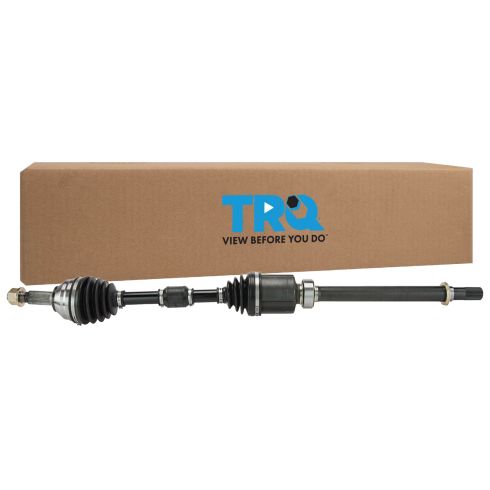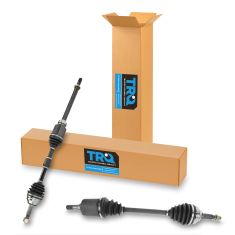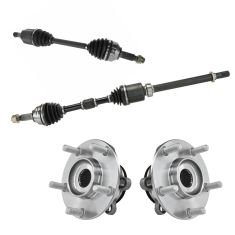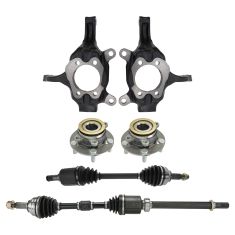1AACV00167-Nissan Rogue Sentra Front Passenger Side CV Axle Assembly TRQ CSA82123

Replaces
2013 Nissan Rogue Front Wheel Drive Front Passenger Side CV Axle Assembly TRQ CSA82123

Product Reviews
Loading reviews
4.71/ 5.0
14
14 reviews
My confidence in 1A has significantly decreased
June 27, 2017
I ordered a right driveshaft for my 2008 Nissan Altima. I order it through 1A because it was the only driveshaft that I found with a dampener system. The part arrived incomplete and damaged. It was missing the nut, it didn't have a dampener and the threading was damaged. I didn't have the option to return the part as the old driveshaft was already pulled out. I had to purchase a tool to fix the thread and installed the OEM nut. Next time I will consider other vendors before 1A
Love this place.
June 26, 2018
I've ordered often from 1A and always surprised at how soon my order arrives. Very good customer service also. Love these guys.
1aauto is the best.
April 13, 2019
Perfect fit. 1aauto is by far the best auto parts website. Never had one issue. Top notch customer service. Great price on the CV axle.
1AACV00167-Nissan Front Passenger Side CV Axle Shaft
June 25, 2020
This is the fast order I order thru an online company. The price was just ok in my account. From now on, I will order all my vehicle parts thru A1 Auto. Thanks, A1 Auto team.
mike leutele
Excellent product
December 30, 2020
The parts were an exact replica of the original. I would recommend this brand.
August 11, 2021
Part came in timely fashion, and is well built
Excellent
September 11, 2021
??????
12altima cv axle
November 28, 2021
Perfect! 1a never disappoints me
Very good quality
[{"url": "https://wac.edgecastcdn.net/001A39/prod/media/pNISJll75W64CYGsite/208350112b8019a109755c92328b2d5b_1640642602351_0.jpeg", "caption": ""}]
December 27, 2021
It seems very good quality and typical to the original parts, fast shipping and easy to install, also it comes with an instruction.
Identical specs to the OEM CV Axel.
April 23, 2022
The axel was a direct fit for my 2011 Altima 2.5S. I had no problems with installation. Luckily no rust to deal with. Old one slipped out effortlessly and the new went in just as easy. I will order the driver side CV Axel from TRQ when it is time.
Best parts around
May 10, 2022
Perfect
Excellent choice to purchase my replacement part from 1Aauto.
July 12, 2022
Unit looked solid and well built. My cars drivability improved consideredly after installatiin of new axle.
June 5, 2023
I liked the fact that this axle was new and not rebuilt. The fit was perfect and installation went very smoothly. I liked that the axle came with a new axle nut too.
September 10, 2023
Worked well
Customer Q&A
Can not having a dampening kit on the drive shaft cause vibrations?
January 7, 2022
10
Our parts are exact replacements for your vehicle's OEM parts. As long as your year, make, and model match up with our listing, these parts will directly fit and function like the originals.
January 7, 2022
T I
This for the manual transmission?
January 27, 2024
10
We installed it on my sons 2012 Nissan Altima bas model and it is an automatic. I couldnt tell you if will work on manual.
January 27, 2024
Eric S
10
Nissan Rogue does not come in a manual transmission, only automatic CVT. However, if you meant front-wheel drive only (as opposed to all-wheel-drive), then yes, this is the one A1 Auto listed for the front-wheel drive only Rogue. For reference, I had a 2010 Rogue SL FWD.
February 1, 2024
Daniel O
Nissan is a registered trademark of Nissan Motor Co., Ltd. 1A Auto is not affiliated with or sponsored by Nissan or Nissan Motor Co., Ltd.
See all trademarks.













